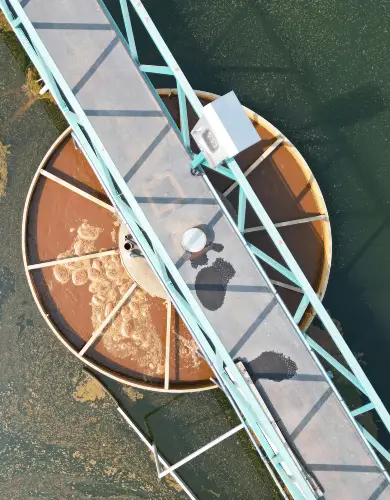Our guide to off-grid business energy
Being “off-grid” is suitable not only for those rural businesses that can’t physically connect to the grid but also for those that prioritise their energy independence.
And the up-and-coming micro-renewables revolution is really making this possible.
In this article, we take a deep dive into off-grid energy generation and storage and the different options businesses have
Contents
- What does it mean to be off-grid?
- What are typical off-grid businesses?
- Micro-renewables for off-grid energy
- Selling excess energy to the grid
- Conclusion
- External Resources
What does it mean to be off-grid?
Being off-grid just means that your property does not have access to an electricity grid. An off-grid company cannot buy power from business energy suppliers.
Electricity grids are national networks of electrical cables that provide stable electrical power to those connected to it, with the power being produced by each nation’s power stations plus any international electricity imports.
Countries have been continuously expanding these networks over the last century, and in most industrialised countries,>99% of the population has access to this grid.
However, this is not the case everywhere. The IEA estimates that over 700 million people worldwide have no access to the grid and are forced to generate their own electricity and heating, while in developed countries, there are always inaccessible areas that will likely remain off-grid forever.
What are typical off-grid businesses?
Off-grid businesses are those that do their activities in areas outside the reach of the electrical grid. Here are some typical off-grid businesses:
Farms
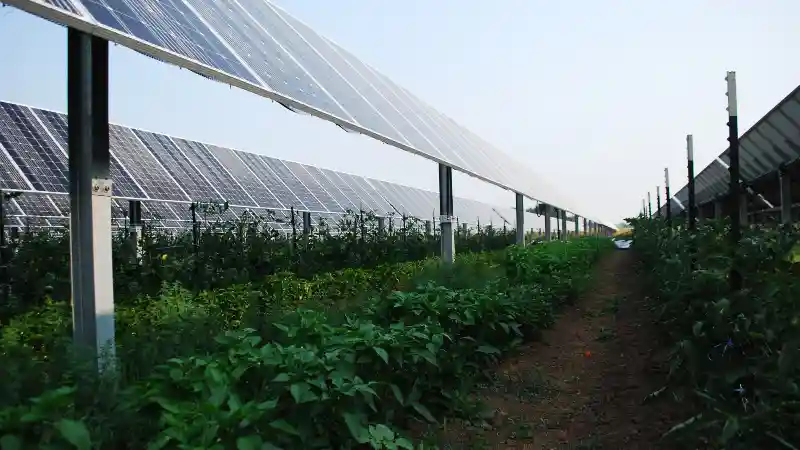
The most typical economic activity in rural areas is farming and agriculture, and it is, therefore, the most typical off-grid business, as it is more expensive and troublesome for electricity companies to reach areas with sparsely distributed populations.
Farms have a long history of independently acquiring their energy. Besides wood and coal for heating, electricity has been generated in multiple ways, from hydro, wind, and diesel generators to, more recently, solar panels or biogas.
In any case, traditional farms and their derivatives, like agro-tourism and vineyards, are at the core of off-grid businesses.
Eco-lodges & Nature Reserves
Eco-lodges are, by definition, located in remote areas of natural beauty (i.e. national parks and nature reserves) as they are geared toward eco-tourism and environmental education.
Therefore, there is a high chance that these businesses are off-grid and must produce their own electricity and heating, if necessary. For example, many high-altitude refuges in the Alps use solar panels and batteries for electricity and natural gas tanks (delivered by a donkey!) for cooking.
Contemporary rainforest eco-lodges tend to be at the forefront of sustainability and avoid using harmful energy sources as much as possible, and may even opt out of using the mains if the country’s energy mix is carbon intensive.
Remote Offices & Off-grid communities
Another popular trend that has sprung over the last decade is the concept of offices in areas of natural beauty, particularly for jobs that are entirely remote.
This is the result of digital nomad communities going mainstream, partly through social media exposure of digital nomad influencers who went viral but also as a result of successful remote experiments due to the COVID pandemic.
The timing coincides with high-quality satellite internet services like Starlink and OneWeb becoming available all around the world, making high-speed internet accessible literally anywhere.
Off-grid contractors
There is a niche in the engineering sector that deals with outdoor work in remote locations, often off-grid.
Examples include drilling contractors, researchers, geophysical surveyors, and civil engineers, just to name a few.
These businesses have traditionally relied on diesel generators, but as the world seeks to rapidly decarbonise, other renewable business energy solutions must be employed for these off-grid applications.
Hybrid on/off grid
And last but not least, there are those businesses that simply want energy independence to hedge against rising business electricity prices.
It’s clear that these are cyclical phenomena that occur every few decades but that are capable of sending over-leveraged small businesses into bankruptcy.
Therefore, some companies have taken the strategic decision to install small-scale commercial renewables and energy storage on their properties to avoid any future energy woes.
The reality is that there are now multiple DIY and commercial solutions to do this, and the costs have been dramatically lowering over the last couple of years for both micro-renewables and micro-storage.
A shorter-term, purely commercial approach to hedging against fluctuating energy prices is to fix your energy bills, so that you always know how much you are paying. However, this is a far cry from being totally in control of your energy.
Micro-renewables for off-grid energy
In this day and age, there is no longer a need to be a DIY energy wizz or a retired engineer to run an off-grid business.
Each off-grid installation has its own nuances, but there are solutions to accommodate virtually all scenarios.
A remote business gets little sunlight but a lot of wind. Or perhaps no access to a flowing stream but plenty of manure and biodigesters? Or imagine it’s the year 2030, and you prefer having your own containerised micro-nuclear reactor to power your business endeavour.
Let’s have a look at some of these exciting solutions for seamless off-grid energy solutions.
Solar panels
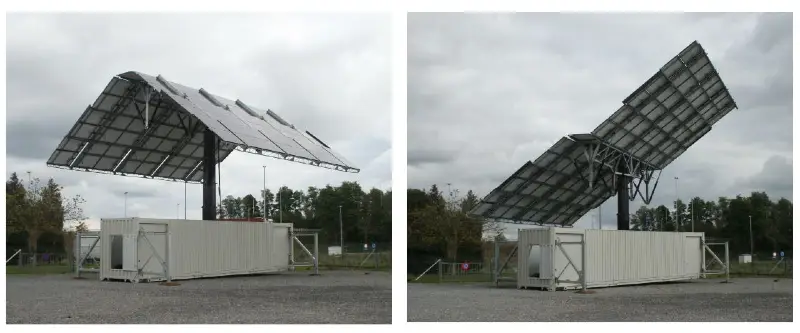
Installing commercial solar panels is the mainstream off-grid option. Panels are cheap, adaptable, ubiquitous, and will work in most places, even when they are often cloudy and at high latitudes like in the UK.
In combination with a solar battery to store energy for the evenings, solar panels offer a complete solution that can scale according to needs.
A small panel and a large transportable battery pack may suffice for an outdoor shelter.
A farm may leverage them to improve their yields by combining panels with doing smart agrivoltaic farming that offers the added benefit of diversified revenue from selling excess electricity back to the grid.
A team of drilling contractors may bring with them a containerised solar power unit which is perfectly suitable for portable off-grid power.
A more permanent remote office may incorporate a prism solar water heater in order to avoid using any natural gas to heat water while saving electricity to make sure there is power for laptops, servers, etc.
These devices are also perfect for eco-lodges and natural reserve facilities that are looking to decarbonise their water heating.
So regardless of your line of remote business, a mix of solar panels and batteries will likely satisfy your needs in 99.9% of cases, which is why it’s no wonder that solar has received more global adoption than any other type of renewable.
Solar can even be used to desalinate saltwater to make seawater greenhouses in coastal deserts.
Micro-turbines
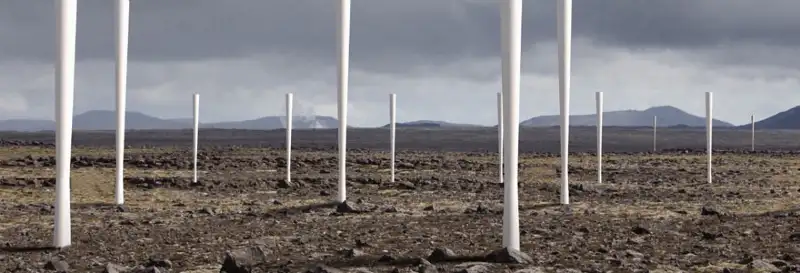
Small wind turbines were once the poster boy of microrenewables. Until the diesel generator and later solar panels came into existence. Turbines are bulkier, and the wind is less reliable than the sun.
But the main issue with wind energy (at least traditional axis turbines) is that the amount of energy produced is proportional to the square of its size. This is great for building off-shore turbines that are taller than the Eiffel Tower but not great for micro-applications.
This has put an enormous damper on decentralised wind energy, but there are still many in the field who are hopeful.
For example, vertical-axis turbines are regarded as a more suitable alternative but still require mass production. They work better in near-ground turbulent winds and don’t need to be large enough to produce decent amounts of energy, particularly in areas with a robust wind resource.
Another interesting innovation is the Vortex Bladeless device that can harness wind energy by oscillating in the wind. They take advantage of the physics of turbulent flow to oscillate perpendicular to the wind, require very little space to operate in, and can work in a large window of wind speeds: promising!
And if you thought this was as alternative as it gets, many have been exploring kites to harness wind energy like a kite surfer or a paraglider uses the wind for propulsion.
The technical name is airborne wind energy, and some designs are very easy to build and operate. There are kite turbines, kites that come in a container, and even small drone-like planes that can pull on a tether and continuously produce energy.
In any case, combining solar with wind energy leads to a more robust off-grid energy network, providing redundancy and potential for excess power when it’s both windy and sunny!
Biofuels

Another great off-grid alternative is biofuel generators, which burn organic matter and its derivatives to generate heat or electricity.
Biofuel generators first became popular during the 1970s energy crisis, which drove farmers and other rural businesses into using the organic matter available to them to generate electricity, as opposed to very cheap petrol.
Typically, manure from large animal farms is allowed to ferment without oxygen in an anaerobic digestor to produce methane, but there are numerous other methods available.
These resulting gasses and liquid fuels can then be combusted to produce heat or drive a small turbine and generate electricity, albeit with some carbon emissions.
However, they are deemed green energy in this context because the entire process captures and utilises methane that would otherwise end up in the atmosphere anyway, as manure naturally biodegrades to produce methane.
But apart from the typical farm biofuels, other novel alternatives have been hitting the market lately. For example, Spent Coffee Grounds from the thousands of urban coffee shops are being dried, compressed and turned into calorific pellets that can be burnt instead of wood or coal.
This is particularly interesting for rural buildings that are equipped with traditional wood or coal burners.
Micro-hydro
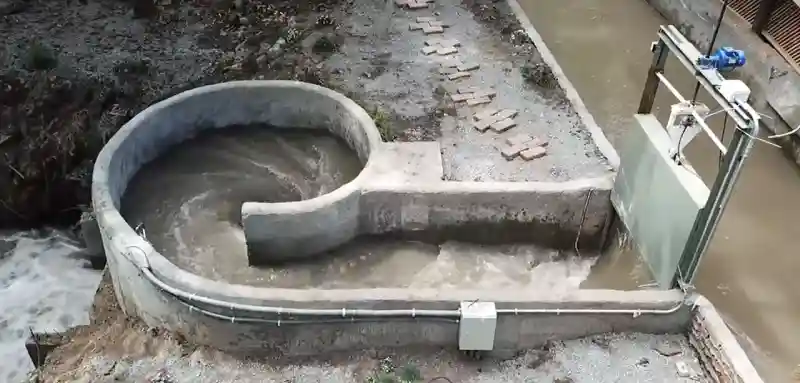
Some off-grid businesses will have privileged access to a river or stream that has an endless supply of renewable energy throughout the year, which can be harnessed with the appropriate equipment.
And it’s very easy to adapt to any water management infrastructure that dams water and lets it pass in a controlled manner, particularly when it’s micro-hydro. And if the water flow is reliable, there is less of a use case for expensive batteries.
Or there are other novel innovations, such as small water outlets that funnel water into a vortex to drive a horizontal turbine, much like when water is flushed down the toilet. It is efficient and has in-built nets to keep environmental impact at a minimum (the river flow remains mainly untouched).
Micro Nuclear
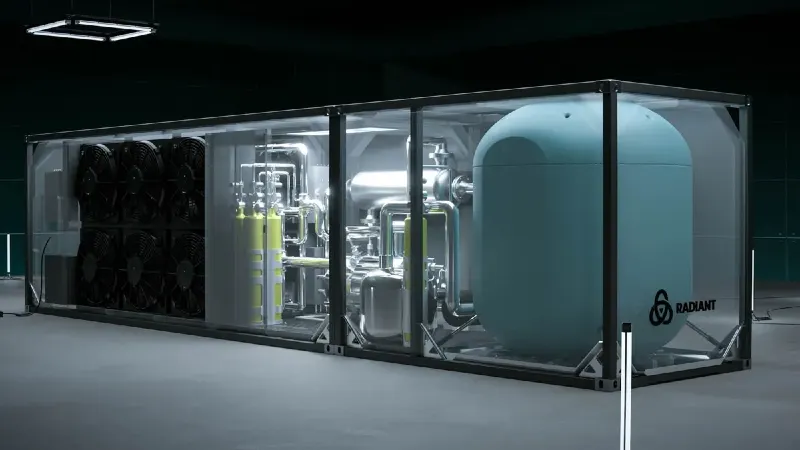
And finally, we’ve left the most unconventional for last. But just like ChatGPT is taking the world by storm, perhaps these portable micro-reactors may revolutionise off-grid energy.
Containerised micro-reactors are being built by ex-Space X engineers who thought some of the space tech designed for Mars missions could be more useful on Earth.
This tiny nuclear reactor has too little fuel to create a catastrophic meltdown and can produce energy non-stop for 10 years without refuelling. No need for controversial batteries or dependence on intermittent renewables. Just plug and play for 24/7 green electricity.
Selling excess energy to the grid
Many countries around the world have specialised schemes to sell independently-generated green electricity back to the grid. This may be interesting for hybrid off-grid/on-grid businesses that can use this to fund their energy independence and even turn a profit.
These schemes are often called “Feed-in-Tariffs” or “Net Metering”, and their nuances vary per country.
For example, the Feed-in Tariff that ran between 2008 and 2019 in the UK saw domestic users and rural businesses sell solar, wind, hydro and biofuel power back to the grid at rates of a few pennies per kWh, depending on the source of electricity.
This was replaced by the Smart Export Guarantee in 2020, which paid businesses with generators of under 5MW capacity to sell their renewable energy. This is equivalent to a solar farm containing up to 20,000 panels, making it very attractive for ventures such as agrivoltaics, but less so for tiny remote offices or independent cabins.
Looking at the macro scale, a decentralised energy generation network owned and operated by small independent businesses should remove some power from large energy corporations that have historically monopolised the space.
Conclusion
There are plenty of energy opportunities if you’re an off-grid land owner or business, regardless of your local geography and climate.
Net-zero by 2050 has to happen, and off-grid solutions are also necessary, particularly considering that nearly 10% of the global population is not connected!
Micro-renewables are becoming widely available to take advantage of the sun, wind, rivers, poop, and perhaps even nuclear reactors in the near future.
Will it become a significant source of long-term income for these businesses? We sure hope so!

